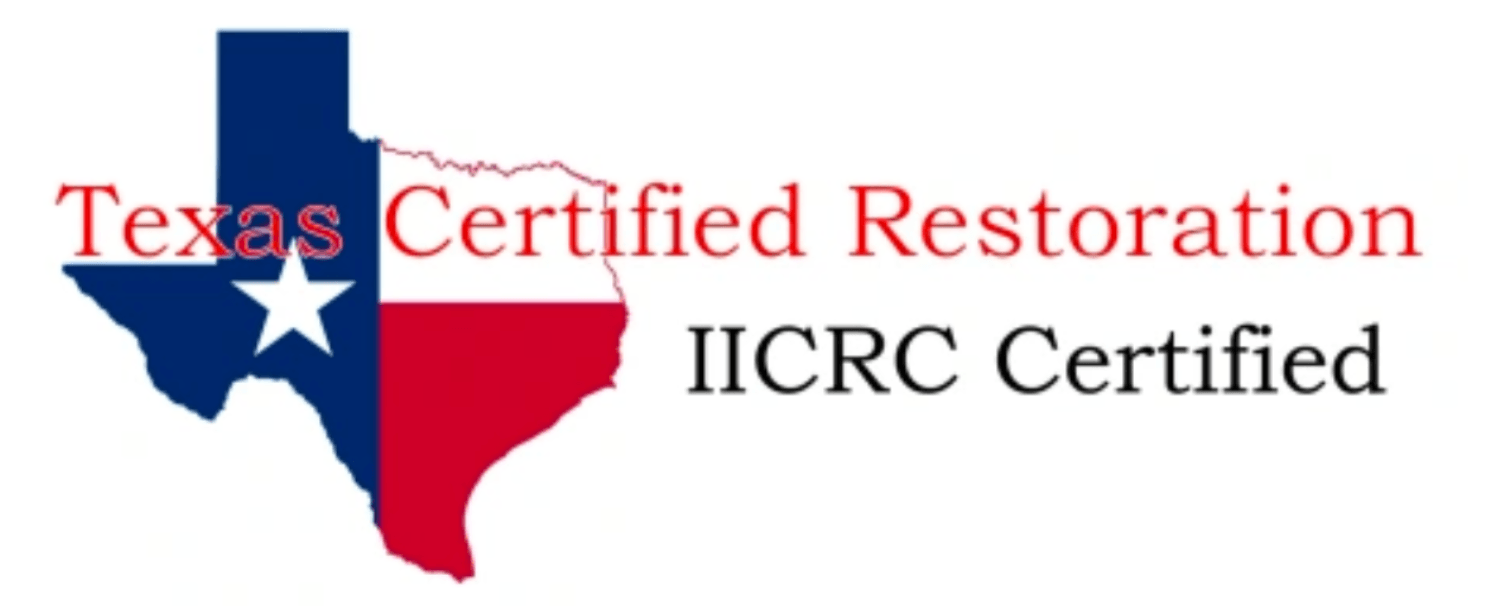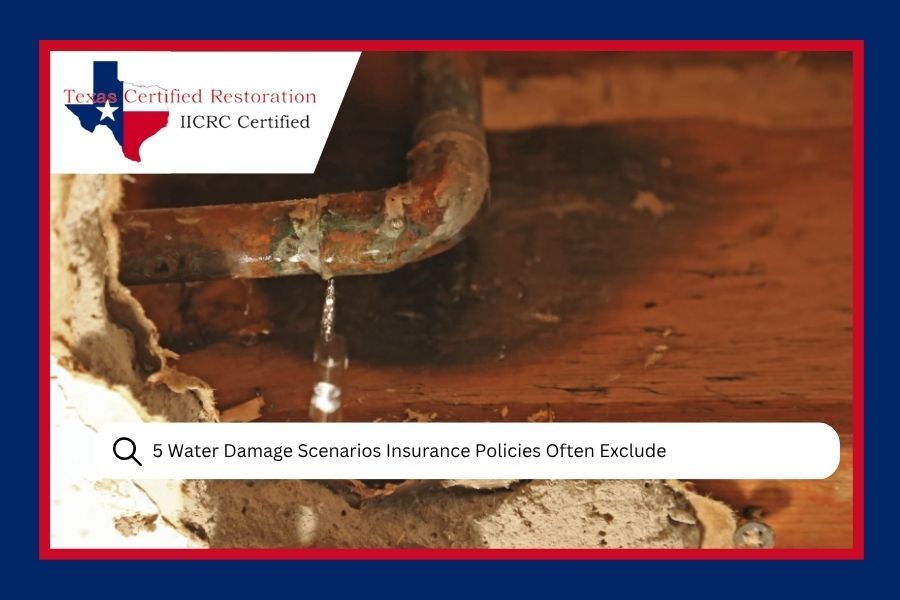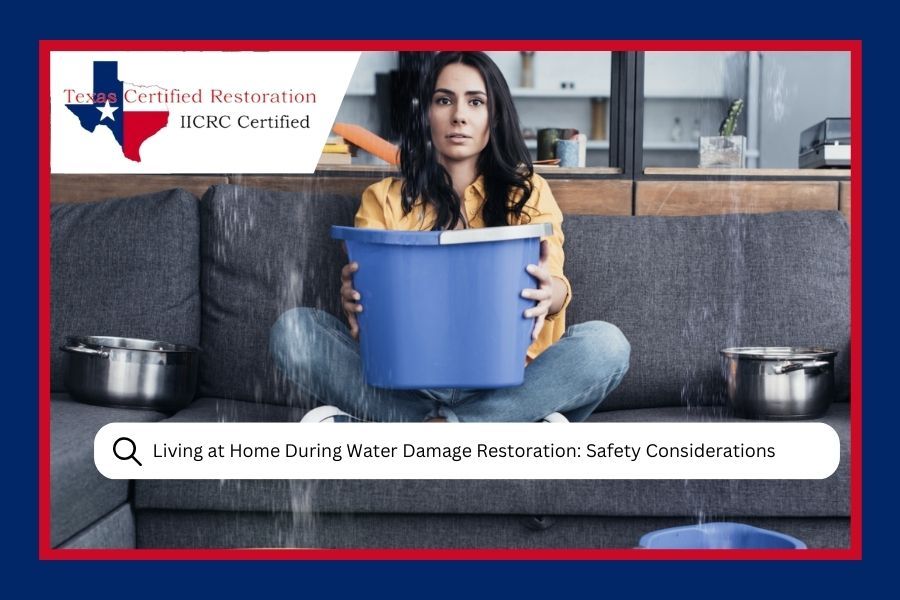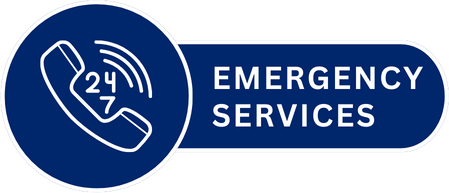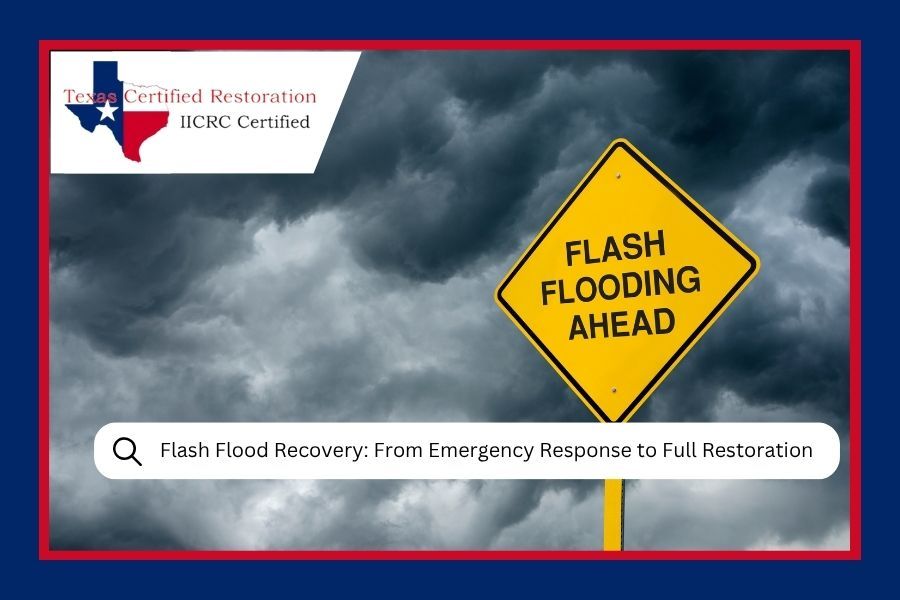
Flash Flood Recovery: From Emergency Response to Full Restoration
Jump to Section
Let's be honest, flash floods don't give you a courtesy call before they show up. One minute you're watching the rain come down, maybe a little heavier than usual, and the next minute water's sneaking under your door like an uninvited houseguest who won't take the hint. At Texas Certified Restoration, we've seen it happen time and time again across Travis County, Williamson County, and the surrounding areas, especially when those storms roll through and overwhelm our drainage systems.
The thing about flash flooding is that it catches people off guard. Unlike a slowly rising river that gives you time to prepare, flash floods are aggressive, fast, and downright unpredictable. Whether it's from one of those intense afternoon thunderstorms we get here in Central Texas or remnants from a Gulf hurricane dumping inches of rain in hours, the result is the same: you need help, and you need it fast. That's where professional water damage restoration becomes absolutely critical.

Flash floods can overwhelm streets and properties in minutes, making rapid response essential for minimizing damage.
This guide walks you through the entire flash flood recovery process, from those scary first moments when you realize your home is flooding to the final steps of getting everything back to normal. We're not just talking about mopping up water here. We're talking about protecting your home, your health, and your sanity through what can be one of the most stressful experiences a property owner faces.
Understanding Flash Flood Damage in Central Texas
Flash flooding in the Austin area is different from what you might see in other parts of the country. We don't have basements to worry about (thank goodness), but we do have our own unique challenges. Our limestone soil and urban development mean that when heavy rains hit, the water has nowhere to go but into low-lying areas, and sometimes that's right through your front door. The Ready.gov flood preparedness guide emphasizes that flash floods can occur within minutes of heavy rainfall, which is exactly what we see here in Central Texas during severe storms.
The damage from flash flooding goes way beyond just wet carpets. Water can seep into wall cavities, saturate insulation, compromise your home's foundation, and create the perfect environment for mold to set up shop in as little as 24 to 48 hours. And here's the kicker: you can't always see where the water went. It might look dry on the surface, but moisture trapped in walls or under flooring is quietly causing problems you won't discover until it's too late.
Flash Flood Recovery Timeline
Important: Floodwater isn't just water. It often contains contaminants, bacteria, sewage, chemicals, and debris that can pose serious health risks. This is why professional cleanup is so important, not just a DIY job with a wet vac.
Immediate Emergency Response: The First 24 Hours
The first day after a flash flood hits is absolutely critical. This is when you can prevent a bad situation from becoming a complete disaster. At Texas Certified Restoration, we've responded to enough emergency calls at 2 AM to know that fast action makes all the difference between a manageable restoration project and a complete gut job.
Safety First, Always
Before you do anything else, you need to make sure it's safe to even enter your property. Standing water and electricity are a dangerous combination. If you have any doubt about electrical safety, stay out and call for help. If you smell gas or suspect a gas leak, get out immediately and call the gas company. Your property can be fixed, but your life can't.
Once you've confirmed it's safe to enter, document everything with photos and videos before you start moving anything. Your insurance company will need this documentation, and trust us, you'll be glad you have it when you're trying to remember what was where three weeks from now.
Emergency Water Removal
Standing water needs to be removed as quickly as possible. While you might be tempted to grab a bucket and start bailing, professional flood damage restoration equipment can extract thousands of gallons in a fraction of the time it would take to do it manually. We're talking industrial pumps and truck-mounted extractors that can clear a flooded room in hours, not days.
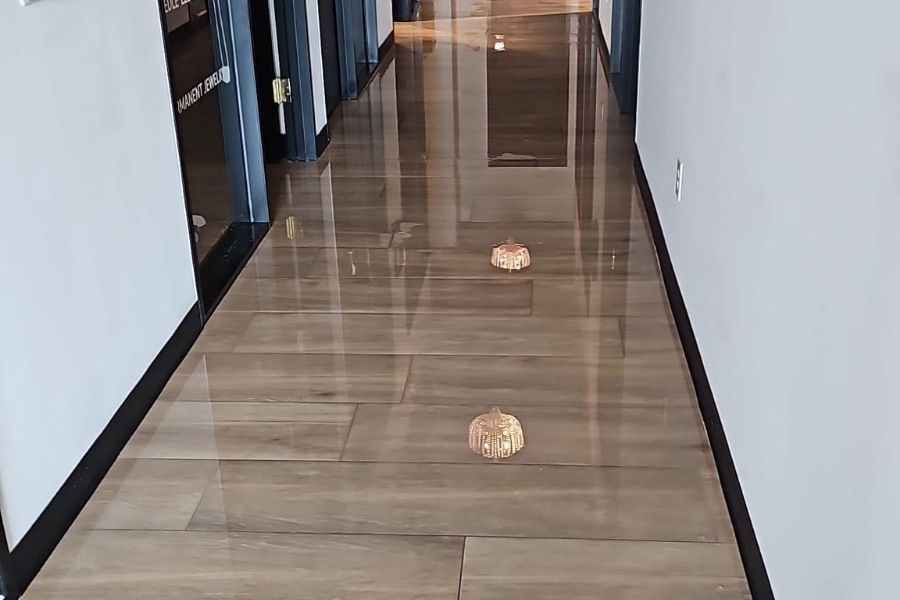
Standing water in your home requires immediate professional extraction to prevent extensive structural damage and mold growth.
The faster the water comes out, the less damage it can do. Every hour that water sits is another hour for it to soak deeper into your walls, floors, and furnishings. It's also another hour for bacteria to multiply and contaminants to spread throughout your home.
Flash Flood Emergency? We're Already On Our Way
24/7 emergency response means we answer the phone when you call, not the next business day. Our team can be at your property fast with the equipment and expertise to start protecting your home right now.
Call (512) 883-6760 NowThe Complete Flash Flood Restoration Process
Once the immediate emergency is handled and the standing water is gone, the real restoration work begins. This isn't just about drying things out. It's a systematic process that addresses every aspect of the damage to make sure nothing gets missed.
Moisture Detection and Assessment
Just because you can't see water doesn't mean it's not there. Professional restoration teams use moisture meters, infrared cameras, and other specialized equipment to find hidden water that's lurking in places you'd never think to check. We've found moisture trapped in wall cavities, under vinyl flooring, in ceiling spaces, you name it.
This step is crucial because you can't dry what you don't know is wet. Missing a pocket of moisture means you're setting yourself up for mold growth, wood rot, and structural problems down the line. Our team at Texas Certified Restoration maps out every wet area so we know exactly what needs attention. You can learn more about how this prevents long-term issues in our article about preventing secondary water damage.
Structural Drying and Dehumidification
This is where the science really comes into play. Proper drying isn't just about pointing fans at wet spots and hoping for the best. It requires understanding psychrometry (fancy word for the study of air and moisture) and creating the right conditions for efficient drying.
We set up industrial air movers to create airflow across wet surfaces and commercial dehumidifiers to pull moisture out of the air. The goal is to create an environment where evaporation happens as quickly as possible while constantly removing that moisture-laden air from the space. This process typically takes 3 to 5 days, depending on the extent of the damage and the materials involved.
What Gets Dried and What Gets Removed
Not everything can be saved after a flash flood. Porous materials that have been saturated with contaminated floodwater, like carpet padding, drywall that's been submerged, and insulation, usually need to be removed and replaced. It's not what anyone wants to hear, but trying to save these materials can lead to mold and odor problems that never quite go away.
Hardwood flooring, tile, concrete, and non-porous materials can often be dried and salvaged. Your furniture and belongings are assessed on a case-by-case basis, with consideration for both the type of material and the category of water that affected them.
| Material Type | Can Usually Be Saved? | Special Considerations |
|---|---|---|
| Hardwood Flooring | Yes | Must be dried quickly; may cup or warp if moisture trapped |
| Carpet Padding | No | Absorbs contaminants; must be replaced |
| Drywall (lower 2 feet) | No | Wicks water upward; cut and replace flood-affected sections |
| Tile & Grout | Yes | Can be cleaned and sanitized thoroughly |
| Insulation | No | Retains moisture and contaminants; must be replaced |
| Wood Furniture | Maybe | Depends on water category and how long it was submerged |
Cleaning, Sanitizing, and Deodorizing
Once everything is dry, the cleaning process begins. Floodwater leaves behind more than just water stains. There's sediment, bacteria, potential sewage contamination, and sometimes chemical residues from whatever the water picked up on its journey to your property.
Every surface that was touched by floodwater gets thoroughly cleaned and sanitized. This includes walls, floors, cabinets, and any salvageable contents. We use EPA-registered antimicrobial treatments to eliminate bacteria and prevent future microbial growth. If there are lingering odors (and there often are), we address those with specialized deodorization techniques, not just air fresheners that mask the smell.
Need immediate help with flood damage? Get Professional Flood Restoration
Flash Flood Recovery Checklist: Your Step-by-Step Guide
- Immediate Response: Ensure safety, turn off electricity if needed, document damage with photos and videos
- Contact Professionals: Call your insurance company and a certified restoration company within the first few hours
- Water Extraction: Remove all standing water using professional-grade pumps and extractors
- Moisture Mapping: Identify all affected areas including hidden moisture in walls, floors, and ceilings
- Remove Unsalvageable Materials: Take out contaminated carpet padding, wet drywall, and saturated insulation
- Set Up Drying Equipment: Position air movers and dehumidifiers strategically throughout affected areas
- Monitor Drying Progress: Check moisture levels daily until everything reaches acceptable dry standards
- Clean and Sanitize: Thoroughly clean all surfaces with antimicrobial treatments to eliminate contaminants
- Address Mold Prevention: Apply preventative treatments to vulnerable areas
- Final Inspection: Verify all areas are completely dry and ready for reconstruction
- Restoration and Repairs: Replace removed materials and restore your property to pre-loss condition
Storm Damage and Insurance Claims
Let's talk about the part that stresses everyone out: dealing with insurance. Most homeowner's policies cover water damage from flash floods if the water came from rain entering through damaged parts of your home, but they typically don't cover ground water flooding. That's what flood insurance is for, which is a separate policy.
The distinction matters because it affects what's covered and how your claim is processed. Our team works with insurance adjusters regularly, and we know how to document everything properly to make sure you get the coverage you're entitled to. We handle the technical jargon, provide the detailed moisture readings and drying logs the adjusters want to see, and advocate for our customers throughout the process. Learn more about how we assist with restoration insurance claims.
Working With Your Insurance Adjuster
When the insurance adjuster comes out to inspect your property, having detailed documentation makes a world of difference. This includes your initial photos and videos, moisture readings, a scope of the damage, and an itemized list of what was affected. The more thorough your documentation, the smoother the claims process tends to go. Understanding your coverage is crucial, and the National Flood Insurance Program offers helpful resources about what's typically covered under flood insurance policies.
At Texas Certified Restoration, we've worked with virtually every insurance company out there. We speak their language, understand their requirements, and know how to present information in a way that helps move your claim along efficiently.
Preventing Future Flash Flood Damage
Once you've been through a flash flood, the last thing you want is to go through it again. While we can't control the weather (trust us, we've tried), there are absolutely steps you can take to reduce your risk and minimize damage if another storm hits.
Property Improvements That Make a Difference
Grading around your foundation can direct water away from your home instead of toward it. Installing French drains or channel drains can give water a path to follow that doesn't involve your living room. Making sure your gutters and downspouts are clear and directing water at least 10 feet away from your foundation helps too.
For properties in low-lying areas or flood-prone zones, consider installing check valves on your plumbing to prevent sewage backups during flooding. Look into water alarms that can alert you to rising water levels before it becomes a major problem. Every property is different, so what works for your neighbor might not be the best solution for you, but there are always options worth exploring.
Emergency Preparedness Planning
Having a plan before disaster strikes means you'll be ready to act instead of panicking. Know where your water shutoff valve is. Keep important documents in waterproof containers or stored digitally. Have a list of emergency contacts including your insurance agent, your restoration company, and your utilities.
If you live or work in an area that floods regularly, consider keeping emergency supplies on hand: sandbags, a sump pump, a wet-dry vacuum, and plastic sheeting can all help minimize damage while you're waiting for professional help to arrive.
Why Professional Restoration Matters
Look, we get it. After a flood, money is tight and the temptation to handle cleanup yourself is strong. But here's the reality: flash flood damage is complicated, messy, and potentially dangerous work that requires specialized knowledge and equipment to do properly.
We've seen too many situations where well-meaning property owners tried to handle restoration themselves, only to discover mold growing in their walls six months later or find that their floors are buckling because moisture was trapped underneath. What seemed like a money-saving decision ended up costing way more in the long run.
Professional restoration isn't just about having better equipment (though we definitely do). It's about understanding building science, knowing how water behaves in different materials, recognizing potential hazards, and having the experience to spot problems before they become disasters. It's also about having the proper protective equipment, liability insurance, and training to handle contaminated water safely.
Our Commitment to Greater Austin
At Texas Certified Restoration, we're not some national chain that treats you like a number. We're your neighbors in Round Rock, and we've built our reputation on being the restoration company people call when they need help the most. We've been doing this for over 10 years combined, and we've seen just about every kind of water damage scenario you can imagine.
When you call us at 2 AM because your house is flooding, you get a real person who answers the phone and a real crew that shows up ready to work. We don't just extract water and call it a day. We walk you through the entire process, explain what we're doing and why, work with your insurance company, and don't consider the job done until your property is completely back to normal.
Flash floods are scary and stressful, but you don't have to face recovery alone. Whether you need immediate emergency response or you're dealing with the aftermath of storm damage from last week, we're here to help. For both residential and commercial properties , our certified professionals bring the expertise and equipment needed to handle the job right.
Recovery from flash flooding takes time, but with the right help, you will get through this. Your home or business can be restored, and life will get back to normal. We've seen it happen hundreds of times, and we're ready to make it happen for you too. For more guidance on water damage recovery, check out our comprehensive flood restoration process guide , learn about common mistakes to avoid during flood damage restoration , and read our detailed article on your immediate action plan after discovering water damage.
Frequently Asked Questions About Flash Flood Recovery
The restoration process should begin within the first 24 hours if possible, ideally within the first few hours. Water damage accelerates quickly, with mold potentially starting to grow within 24 to 48 hours of exposure to moisture. The faster you start extraction and drying, the more you can save and the less damage will occur. Even if it's the middle of the night, calling a professional restoration company immediately gives you the best chance of minimizing the damage and reducing overall restoration costs.
Coverage depends on how the water entered your property. Standard homeowner's insurance typically covers water damage from rain that enters through storm-damaged roofs, windows, or walls. However, it usually does not cover flooding from rising groundwater or overflow from natural water sources, which requires separate flood insurance through the National Flood Insurance Program. The best approach is to review your specific policy and contact your insurance agent to understand exactly what's covered. Either way, proper documentation of the damage is critical for any claim.
It depends on the extent of the damage and which areas of your home were affected. If the damage is localized to specific rooms and there are no safety concerns like electrical hazards or structural issues, you may be able to stay in unaffected areas while restoration work is happening. However, the industrial equipment we use (air movers and dehumidifiers) is loud and runs 24/7 during the drying phase, which can be disruptive. If the damage is extensive or if there's contamination from sewage or chemicals in the floodwater, temporary relocation might be necessary for your health and safety.
Flash flood cleanup is more complex because floodwater is considered Category 3 water, meaning it's contaminated with bacteria, sewage, chemicals, and debris picked up as it traveled. This requires more extensive sanitization and often means more materials need to be removed and replaced rather than dried and saved. Regular water damage from a burst pipe or appliance leak typically involves cleaner water and may allow for more materials to be salvaged. Flash floods also tend to affect larger areas simultaneously and often come with additional challenges like mud, silt, and outdoor debris that need to be addressed during the cleanup process.
Don't Wait for Flash Flood Damage to Get Worse
Every minute counts when it comes to water damage. Our certified team is standing by 24/7 to respond to your emergency in Round Rock, North Austin, and throughout the Greater Austin area.
Get Help Now: (512) 883-6760